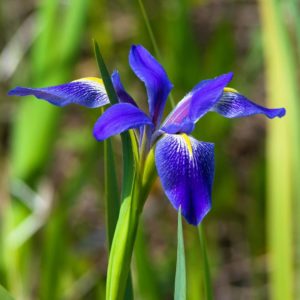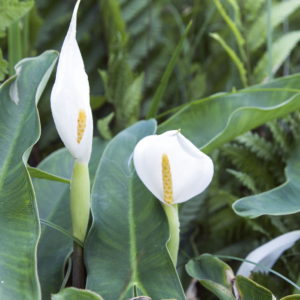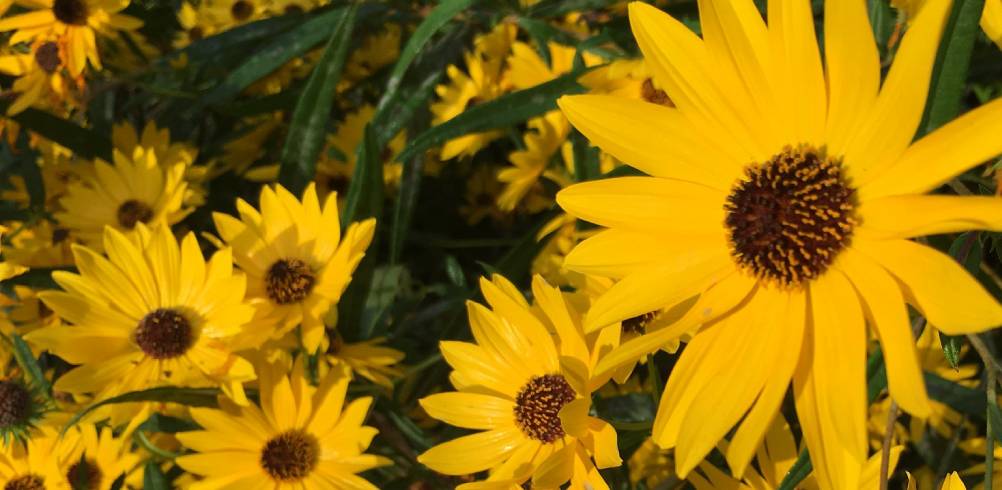Welcome to the marsh in springtime! After a period of dormancy during the cold winter months, most of the marsh plants are returning and growing with vigor. Plants such as blue flag iris, arrow arum, and marsh sunflower are all putting out gorgeous blooms to be used by native pollinators and other animals.
 Blue flag iris, Iris versicolor, is native to the eastern United States and Canada and is only found in freshwater wetlands. Their vibrant blue flowers will be instantly recognizable to a gardener. The careful observer can find these decorating many swamps and marshes throughout the James River Watershed. In the Lower James, a great place to find these is around the Greenspring Trail in Williamsburg.
Blue flag iris, Iris versicolor, is native to the eastern United States and Canada and is only found in freshwater wetlands. Their vibrant blue flowers will be instantly recognizable to a gardener. The careful observer can find these decorating many swamps and marshes throughout the James River Watershed. In the Lower James, a great place to find these is around the Greenspring Trail in Williamsburg.
Arrow arum, Peltandra virginica, has been mentioned in this blog before, and for good reason! Its importance to fresh and brackish marshes in the Lower James cannot be understated. Their white, lilly-like blossoms have separate male and female flowers, which are pollinated by flies. Look around both tidal and non-tidal marshes within the James River Watershed to see these!
 Marsh sunflower, Helianthus angustifolius, is found in brackish marshes from Long Island to Texas. This flower is a favorite of Aaron’s skipper (a butterfly found only in saltmarshes!) and many other species of bees and birds. Growing five to seven feet tall, these beautiful plants are hard to miss! Your best bet to find these in bloom is in the eastern edge of the Lower James, such as Ragged Island Wildlife Management Area or Mill Creek in Fort Monroe.
Marsh sunflower, Helianthus angustifolius, is found in brackish marshes from Long Island to Texas. This flower is a favorite of Aaron’s skipper (a butterfly found only in saltmarshes!) and many other species of bees and birds. Growing five to seven feet tall, these beautiful plants are hard to miss! Your best bet to find these in bloom is in the eastern edge of the Lower James, such as Ragged Island Wildlife Management Area or Mill Creek in Fort Monroe.
These elegant plants are fun to enjoy both when they are blooming and when they are not. However, they are dependent on clean water without an excess of nutrients or sediment. To do your part to make sure that these and other native species have a healthy river to live in, take the pledge to join our River Hero Homes program! It is completely free to join, and you will receive a free flag to put in your yard!

